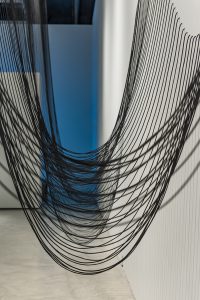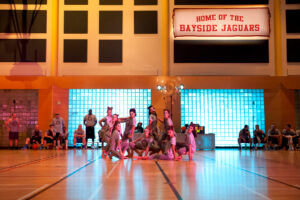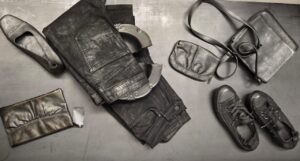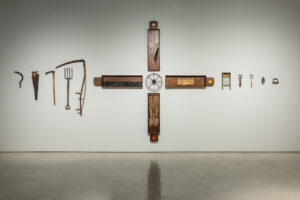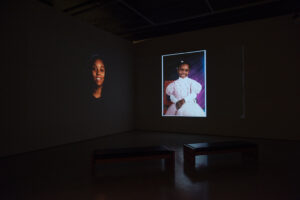In The Living River Project: Art, Water and Possible Worlds, co-curators Patrick Mahon and Stuart Reid build on previous iterations of the exhibition to consider the cultural, historical and environmental significance of water issues in the Windsor-Detroit corridor. The Detroit River, which connects Lake St. Clair with Lake Erie is one of the world’s busiest waterways and border crossing points, and has the distinction of having dual heritage designation from Canada and America. The river’s shores embrace the largest metropolitan area on any international border. It is also one of the first International Wildlife Refuges, known for being a large habitat for many ecosystems and species. Historically, Indigenous peoples have been recorded on the shores from as early as 400 A.D. Settlement by Europeans happened around 1650 with trade, culture and industrialization spurred by the river and its resources. The Detroit River was also an integral part of the Underground Railway, a crossing point for slaves escaping to freedom.
Drawing from the region’s history as well as the increasingly precarious ecology of this body of water, artists Nadine Bariteau, Elizabeth Chitty, Patricia Coates, Soheila Esfahani, Gautam Garoo, Joscelyn Gardner, Patrick Mahon + Dickson Bou with Mona Stonefish (with Windsor Grade 4&5 Students), Colin Miner, Chris Myhr, Troy Ouellette, Lee Rodney with Justin Langlois, Hamilton Perambulatory Unit and IN/TERMINUS Research Group, Quinn Smallboy, and Jennifer Willet come together to reflect on the nature of water while advocating for its historical preservation and environmental protection. A related creative project on display, entitled River of Names, involved school children from Marlborough Public School and West Gate Public School in Windsor working with Indigenous elder, Mona Stonefish, and artist Patrick Mahon.
Co-curated by Patrick Mahon and Stuart Reid
